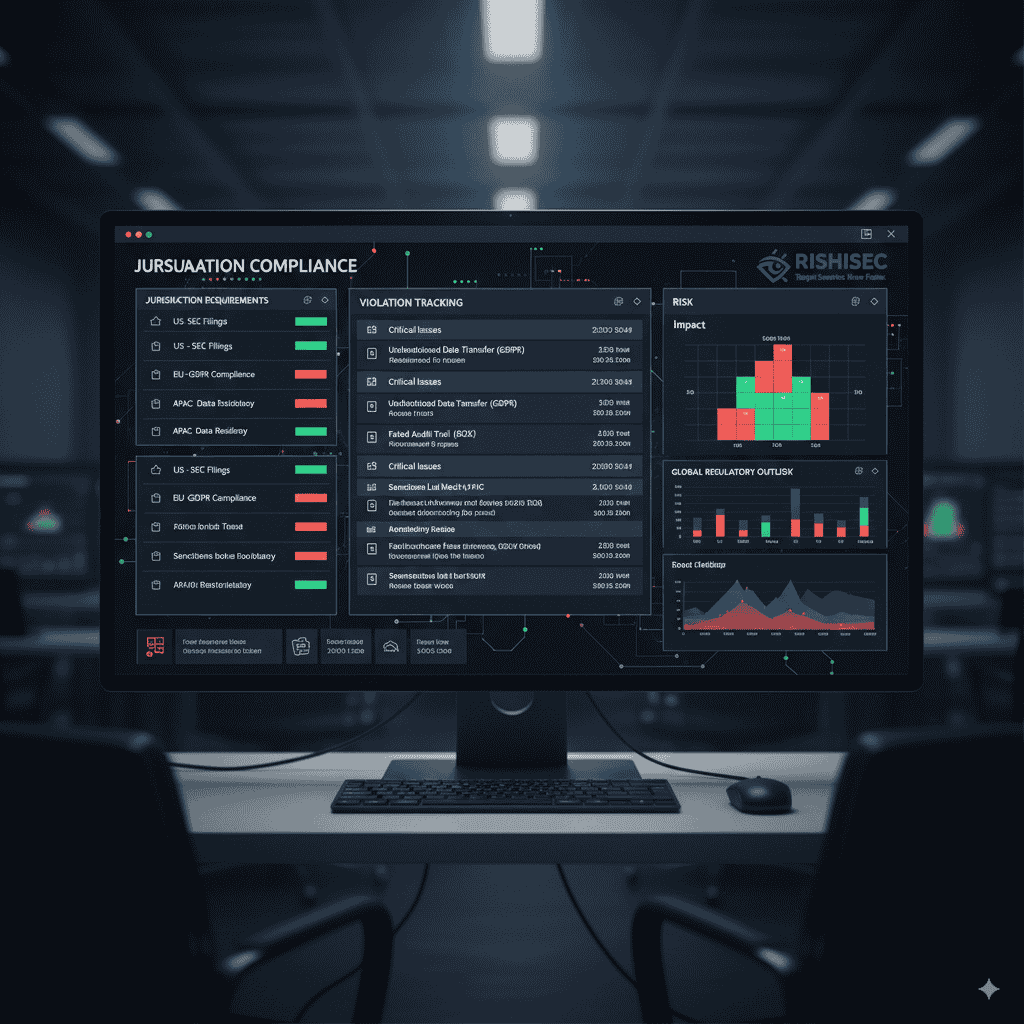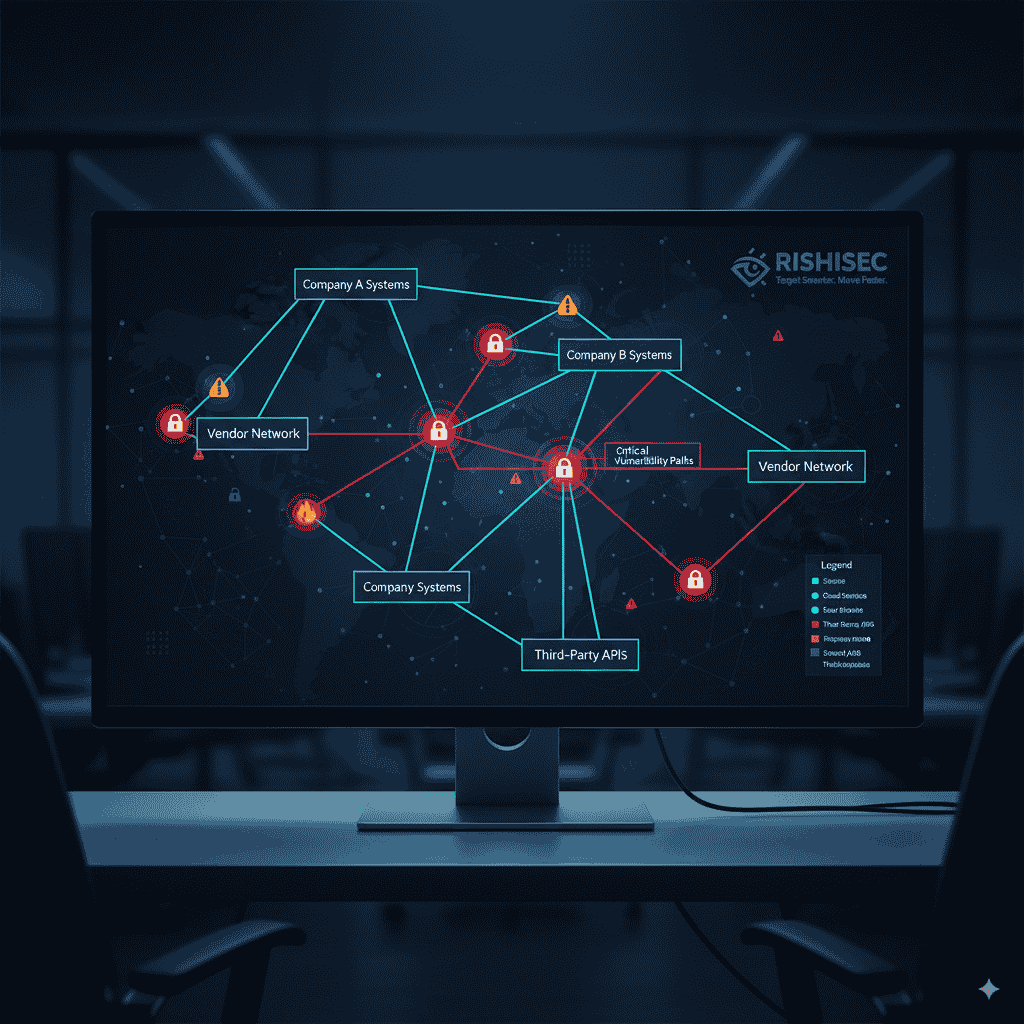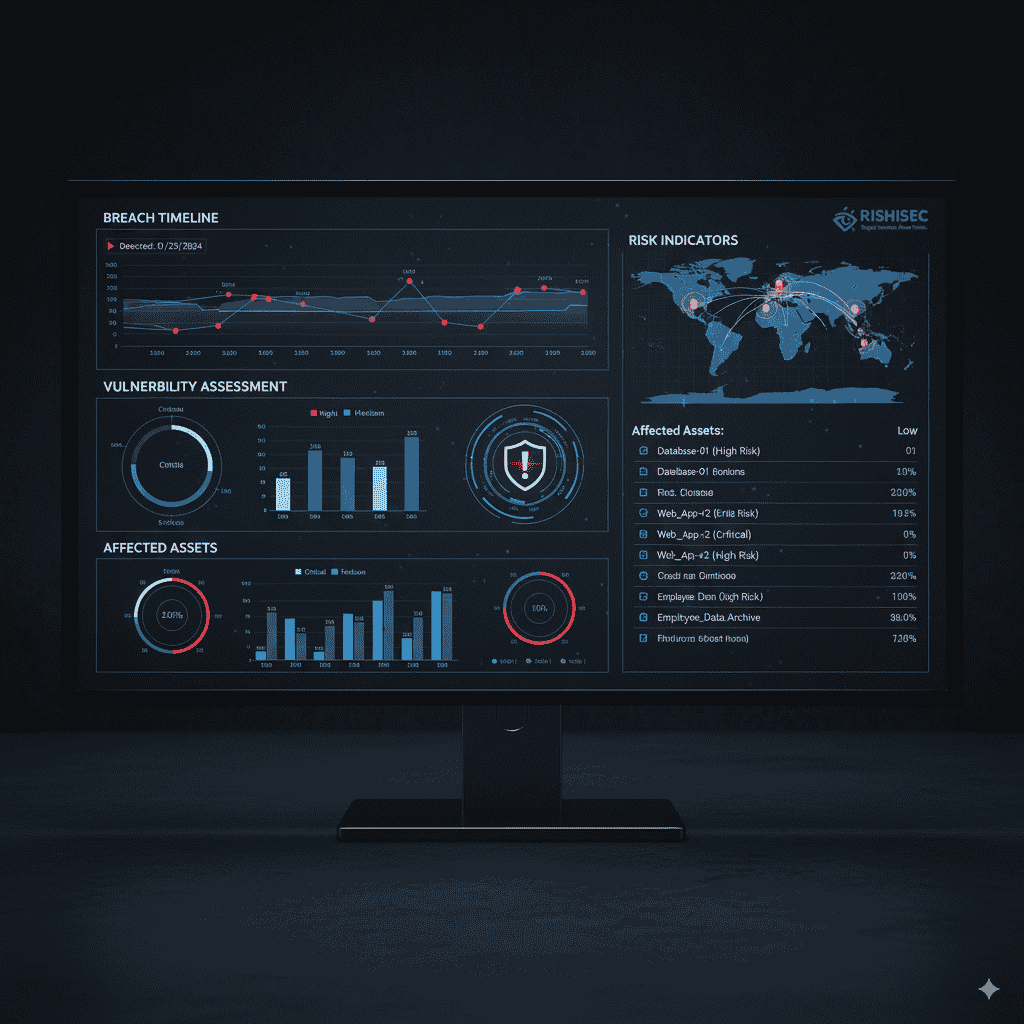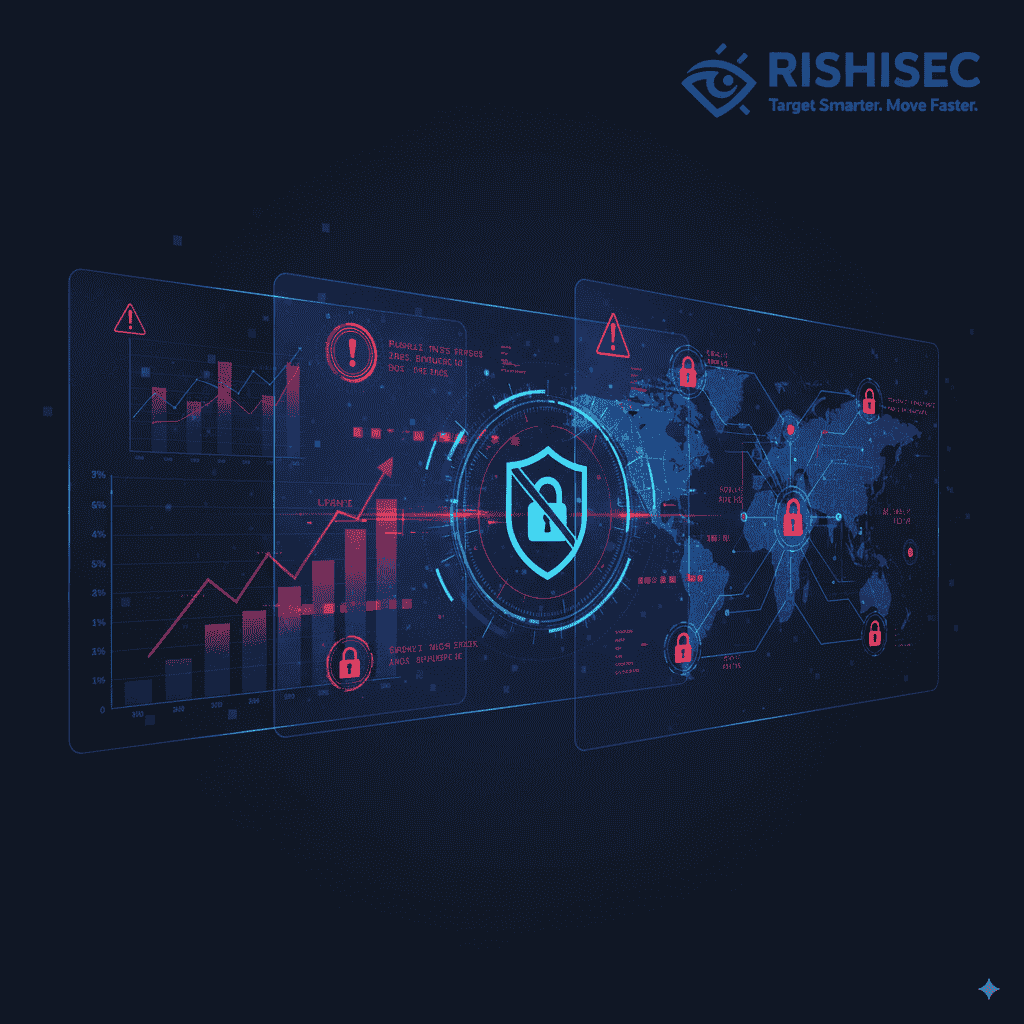In 2023, a $2.4 billion pharmaceutical merger collapsed just weeks before closing when OSINT investigators discovered the target company had suffered three unreported data breaches affecting over 500,000 patient records. The acquiring company walked away, citing “material misrepresentation of cyber risk posture.”
This scenario plays out more frequently than most M&A professionals realize. Traditional due diligence focuses heavily on financial metrics, market position, and operational capabilities while treating cybersecurity as a checkbox item. However, hidden cyber liabilities can destroy deal value faster than any financial irregularity.
Modern M&A demands sophisticated cyber due diligence that goes beyond questionnaires and compliance certificates. Open Source Intelligence (OSINT) provides the independent verification capabilities that M&A teams need to uncover hidden cyber risks, validate security claims, and protect deal integrity.

The Hidden Costs of Ignoring Cyber Posture in Acquisitions
Cyber risks in M&A transactions extend far beyond immediate financial losses. They create cascading effects that can undermine deal rationale, regulatory approval, and post-merger integration success.
Regulatory and Legal Exposure
Undisclosed data breaches trigger regulatory investigations that can delay or derail transactions. GDPR fines alone can reach 4% of global annual revenue, while sector-specific regulations like HIPAA impose additional penalties that compound over time. Moreover, class-action lawsuits following breach disclosures often target acquiring companies as “deep pockets” for damages.
OSINT can identify regulatory investigations, ongoing litigation, and compliance violations that standard due diligence misses. Court filings, regulatory announcements, and legal databases provide early warning of potential liabilities that may not appear in formal disclosures.
Operational Disruption Risks
Cyber incidents don’t just create immediate costs; they disrupt operations for months or years. Legacy systems with known vulnerabilities, poor vendor security practices, and inadequate incident response capabilities can trigger post-acquisition crises that destroy synergy projections.
Furthermore, cyber incidents during integration phases are particularly damaging since they occur when systems are most vulnerable and stakeholder attention is highest. The reputational damage often exceeds direct financial losses.
Valuation Impact Assessment
Cyber risk affects multiple valuation drivers simultaneously. Customer trust erosion reduces revenue projections, regulatory fines increase cost structures, and remediation expenses consume integration budgets. The table below illustrates typical cyber risk impacts on deal valuation:
| Risk Category | Typical Impact Range | Valuation Adjustment | Timeline |
|---|---|---|---|
| Major Data Breach | $3-15M direct costs | 5-15% discount | Immediate |
| Regulatory Non-Compliance | $500K-50M fines | 2-8% discount | 6-18 months |
| Legacy System Vulnerabilities | $1-10M remediation | 3-10% discount | 12-24 months |
| Vendor Security Issues | $500K-5M mitigation | 1-5% discount | 3-12 months |
How OSINT Transforms M&A Cyber Due Diligence
Traditional cyber due diligence relies heavily on target company self-reporting through questionnaires, compliance certificates, and management presentations. While these sources provide useful baseline information, they suffer from inherent limitations that OSINT addresses effectively.
Independent Verification Capabilities
OSINT provides independent verification of cyber security claims without relying on target company cooperation or disclosure. By monitoring breach databases, security researcher publications, and dark web marketplaces, M&A teams can identify incidents that companies prefer to keep quiet.
This independent perspective is particularly valuable when evaluating cybersecurity maturity claims. Companies may present sophisticated security programs in due diligence materials while publicly demonstrating poor security practices through exposed systems, weak configurations, or delayed patch management.
Comprehensive Vendor Risk Assessment
Modern businesses depend on complex vendor ecosystems that create extensive cyber attack surfaces. Traditional due diligence struggles to map these relationships comprehensively, particularly when vendors operate across multiple jurisdictions or use subcontractors extensively.
OSINT techniques can map vendor networks through contract databases, corporate filings, payment records, and operational indicators. This comprehensive mapping reveals third-party risks that may not appear in formal vendor management documentation.
For deeper insights into vendor risk assessment, explore our comprehensive guide on supply chain cyber attacks and their impact on organizational security.

Real-Time Risk Monitoring
M&A transactions often span several months, during which cyber risk profiles can change dramatically. New vulnerabilities emerge, threat actors launch campaigns, and regulatory requirements evolve. Static due diligence reports become outdated quickly in fast-moving cyber environments.
OSINT enables continuous monitoring throughout deal timelines, providing real-time alerts when new risks emerge or existing issues escalate. This ongoing visibility ensures that deal terms reflect current rather than historical risk levels.
Essential Cyber Checks for M&A Due Diligence
Effective OSINT cyber due diligence requires systematic evaluation across multiple risk categories. The following framework provides comprehensive coverage of critical risk areas.
1. Historical Breach and Incident Analysis
Start by identifying all publicly reported cyber incidents involving the target company, regardless of when they occurred or their reported severity. Many organizations downplay incident significance or delay disclosure, making independent verification essential.
Key OSINT sources include:
- Breach notification databases maintained by state attorneys general
- Security research publications and vulnerability disclosures
- Dark web marketplaces where stolen data appears for sale
- Industry-specific incident reporting systems
- News media coverage and regulatory announcements
Pay particular attention to patterns indicating systematic security weaknesses rather than isolated incidents. Multiple breaches, similar attack vectors, or recurring vulnerabilities suggest fundamental security program deficiencies.
2. Digital Asset and Attack Surface Mapping
Comprehensive attack surface analysis reveals the full scope of systems and services that attackers can target. Many organizations maintain larger digital footprints than they realize, including legacy systems, development environments, and third-party integrations that increase risk exposure.
OSINT techniques for asset discovery include:
- DNS enumeration and subdomain discovery
- SSL certificate transparency log analysis
- Cloud storage and service enumeration
- Social media and job posting analysis for technology stacks
- Patent and technical publication reviews
Document all discovered assets and evaluate their security posture through vulnerability scanning, configuration analysis, and public exposure assessment.
3. Vendor and Supply Chain Risk Assessment
Third-party relationships create extensive cyber risk exposure that traditional due diligence often underestimates. Comprehensive vendor risk assessment requires mapping both direct relationships and multi-tier dependencies that may not appear in formal documentation.
The vendor risk evaluation framework should include:
| Assessment Category | OSINT Sources | Key Risk Indicators |
|---|---|---|
| Direct Vendors | Contract databases, payment records, corporate filings | Security incidents, compliance violations, financial instability |
| Technology Partners | API documentation, integration guides, technical forums | Vulnerability disclosures, patch delays, weak authentication |
| Cloud Providers | Configuration databases, service monitoring, security bulletins | Misconfigurations, excessive permissions, data exposure |
| Subcontractors | Regulatory filings, industry databases, news coverage | Security breaches, regulatory violations, operational issues |
4. Employee Credential and Information Exposure
Employee credentials frequently appear in data breaches, credential stuffing attacks, and social engineering campaigns. Compromised credentials provide attackers with legitimate access paths that bypass traditional security controls.
Monitor multiple sources for credential exposures:
- Public breach databases and credential dumps
- Dark web credential marketplaces
- Paste sites and code repositories with embedded secrets
- Social media profiles revealing sensitive information
- Professional networking sites with detailed system information
Additionally, evaluate information security awareness through employee social media behavior, public information sharing, and response to social engineering attempts.
5. Regulatory Compliance and Legal Issues
Regulatory violations and legal proceedings often indicate systemic security program weaknesses that create ongoing compliance risks. Many cyber-related regulatory actions don’t receive widespread publicity, making OSINT research essential for complete visibility.
Key areas for investigation include:
- Data protection authority enforcement actions and ongoing investigations
- Industry-specific regulatory violations (HIPAA, PCI DSS, SOX, etc.)
- Class-action lawsuits related to data breaches or privacy violations
- Securities and Exchange Commission cybersecurity disclosures
- International regulatory actions that may affect global operations
Cross-reference findings with target company disclosures to identify gaps or inconsistencies that require further investigation.

6. Threat Actor Targeting and Intelligence
Some organizations attract disproportionate attention from threat actors due to their industry, geographic location, customer base, or previous security incidents. Understanding threat actor interest helps predict future attack likelihood and required security investments.
Research threat intelligence across multiple sources:
- Threat actor forums and communications discussing potential targets
- Security researcher publications about industry-specific campaigns
- Government cybersecurity alerts and intelligence bulletins
- Industry information sharing organizations and threat feeds
- Academic research on sector-specific cyber risks
Pay particular attention to geopolitical factors that may increase targeting risk, especially for companies with government contracts, critical infrastructure exposure, or operations in high-risk regions.
Implementation Challenges and Solutions
While OSINT provides powerful capabilities for M&A cyber due diligence, successful implementation requires addressing several common challenges that can undermine program effectiveness.
Compressed Deal Timelines
M&A transactions operate under intense time pressure that leaves little room for comprehensive cyber due diligence. Traditional OSINT investigations can take weeks or months to complete thoroughly, while deal teams need actionable intelligence within days.
Address timeline constraints through:
- Pre-configured OSINT collection frameworks that can deploy rapidly
- Automated monitoring and alerting systems for priority risk indicators
- Prioritized assessment frameworks focusing on highest-impact risks first
- Collaborative investigation tools that enable parallel analysis by multiple team members
Consider implementing continuous OSINT monitoring for potential acquisition targets in key markets, providing baseline intelligence that accelerates formal due diligence when opportunities arise.
Information Verification and False Positives
OSINT sources vary significantly in reliability and accuracy, particularly when dealing with cyber incident information that companies actively try to suppress or misrepresent. False positives can derail deals unnecessarily, while missed true positives create liability exposure.
Implement robust verification procedures:
- Cross-reference findings across multiple independent sources
- Establish confidence scoring systems for different types of intelligence
- Develop escalation procedures for high-impact but low-confidence findings
- Maintain audit trails documenting analysis methods and source reliability
For insights into advanced verification techniques, review our analysis of fraud investigation methods that apply similar source verification principles.
Legal and Ethical Considerations
M&A due diligence operates under strict confidentiality requirements that can complicate OSINT collection activities. Additionally, some jurisdictions impose restrictions on certain types of cyber reconnaissance that may be perfectly legal in other contexts.
Establish clear operational boundaries:
- Define acceptable OSINT sources and collection methods in advance
- Obtain legal review of investigation protocols across relevant jurisdictions
- Implement data handling procedures that protect confidential information
- Document all activities to demonstrate compliance with applicable regulations
Kindi’s Advanced M&A Cyber Due Diligence Capabilities
RishiSec’s Kindi platform addresses these implementation challenges while providing advanced capabilities specifically designed for M&A cyber due diligence teams.
Kindi’s automated collection and analysis capabilities can process thousands of cyber risk indicators simultaneously, dramatically reducing the time required for comprehensive due diligence. Machine learning algorithms prioritize findings by relevance and confidence levels, ensuring that deal teams focus attention on the most critical risks first.
The platform’s link analysis functionality automatically maps complex vendor relationships and technology dependencies, revealing third-party risks that manual investigation might miss. Interactive visualizations help M&A analysts understand these relationships quickly and communicate findings effectively to senior management and deal sponsors.
For ongoing deal monitoring, Kindi provides real-time alerts customized to each target’s risk profile and the acquiring company’s risk tolerance. Automated reporting generates audit-ready documentation that demonstrates comprehensive due diligence and supports deal valuation decisions.
Integration capabilities ensure that OSINT intelligence enhances rather than replaces existing due diligence processes. API connections enable seamless data flow between Kindi and deal management platforms, virtual data rooms, and risk assessment tools.
Cyber Due Diligence Best Practices
- Start early: Begin OSINT collection as soon as potential targets are identified, not after LOI signing
- Focus on materiality: Prioritize risks that could affect deal value, timing, or regulatory approval
- Document everything: Maintain detailed records of sources, methods, and findings for legal and audit purposes
- Cross-verify findings: Confirm significant discoveries through multiple independent sources
- Engage specialists: Leverage cybersecurity expertise for technical analysis and risk assessment
- Monitor continuously: Maintain surveillance throughout deal timelines to catch emerging risks
- Plan integration security: Use due diligence findings to inform post-merger cybersecurity planning
The Future of M&A Cyber Due Diligence
As cyber risks continue evolving and deal complexity increases, M&A teams that embrace OSINT-enhanced cyber due diligence will gain substantial competitive advantages. The ability to identify hidden cyber liabilities, validate security claims independently, and monitor risks continuously will become essential rather than optional.
Moreover, regulators and boards increasingly expect sophisticated cyber risk assessment in M&A transactions. Demonstrating advanced due diligence capabilities through OSINT can differentiate deals during regulatory review and reduce post-acquisition surprises that damage stakeholder confidence.
The transformation from reactive cyber due diligence to proactive risk intelligence represents a fundamental shift in how organizations approach M&A cybersecurity. Companies that make this transition successfully will not only reduce deal risk but also improve post-merger integration outcomes through better security planning and risk management.
For additional insights on strengthening cyber investigations, explore our guides on automated OSINT investigations and learn how OSINT integration enhances threat detection in corporate environments.
Want to strengthen your OSINT skills and other ones you can suggest? Check out our OSINT courses for practical, hands-on training.
Ready to transform your M&A cyber due diligence with AI-powered OSINT? Discover how Kindi can accelerate your deal intelligence while reducing cyber risk exposure.
FAQ
How long does comprehensive OSINT cyber due diligence typically take?
Timeline depends on target size and complexity, but automated OSINT platforms like Kindi can provide initial risk assessments within 24-48 hours. Comprehensive analysis typically requires 1-2 weeks for mid-market deals and 2-4 weeks for large, complex transactions. Starting collection early in the deal process helps manage timeline constraints.
What cyber risks most commonly derail M&A transactions?
Undisclosed data breaches, ongoing regulatory investigations, and systemic vendor security issues represent the highest-impact risks. These issues often surface late in due diligence when remediation options are limited and deal timelines are compressed. OSINT can identify these risks early when they’re easier to address or properly price into deal terms.
How can OSINT findings be integrated with traditional cyber due diligence?
OSINT provides independent verification of management representations and questionnaire responses. Use OSINT to validate claimed security capabilities, verify incident disclosure completeness, and assess vendor risk management effectiveness. The combination provides both company-provided information and independently verified intelligence.
What legal considerations apply to OSINT in M&A due diligence?
OSINT collection must comply with applicable privacy laws, computer fraud statutes, and confidentiality requirements. Focus on publicly available information and avoid any activities that could be construed as hacking or unauthorized access. Legal review of collection protocols is essential, particularly for cross-border transactions.
How do you prioritize cyber risks when multiple issues are identified?
Focus on risks that could affect deal value, regulatory approval, or integration timeline. Material data breaches, ongoing regulatory investigations, and systemic security weaknesses typically warrant highest priority. Use risk scoring frameworks that consider probability, impact, and timeline for each identified issue.



